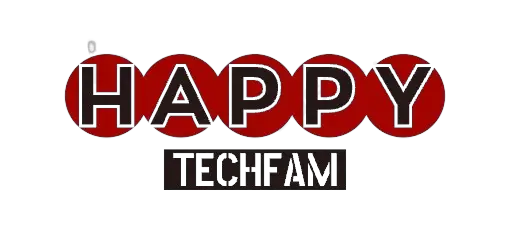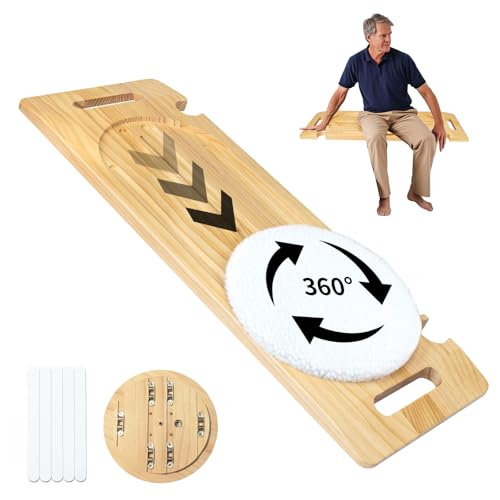Let’s be honest, dealing with limited mobility, whether your own or that of a loved one, is tough. I remember the strain and anxiety that came with trying to move someone safely from one place to another – from the bed to a chair, or a wheelchair to the car. The constant worry about falls, injuries, or simply the sheer physical effort required was exhausting. Finding a reliable way to perform these transfers easily and securely felt absolutely crucial; the alternative was facing increasingly difficult and potentially dangerous situations that could severely limit independence and quality of life.
- Easy Transfer: Realizes the rapid transfer of people with limited mobility from beds, chairs, wheelchairs, cars, etc., and easily opens the era of nursing care
- Safe and non-slip: The lift plate is made of plasticized steel, sturdy and durable, with toothed granule design on the back to prevent slipping, which increases safety during use and prevents people...
- Curved handle: Arc handle, smooth surface, will not scratch the user, and the arc design is easy for the people to grip, safer to use, the people can easily take the handle (When you receive a lift...
Considerations Before Acquiring a Transfer Board
When someone’s mobility is compromised, simple movements like getting out of bed or into a chair become significant challenges. This is where a sliding transfer board comes into play, acting as a bridge to facilitate smooth, less strenuous transitions. Anyone needing assistance to move between surfaces, such as individuals using wheelchairs, recovering from surgery, or seniors with strength or balance issues, could greatly benefit from such a device. The ideal user is someone who retains some upper body strength and balance, or who has a reliable caregiver assisting them. It’s important to note that someone with absolutely no ability to bear weight or assist in the transfer might require different equipment, like a mechanical lift, as sliding boards often require some degree of user participation or significant caregiver strength depending on the situation.
Before purchasing a transfer board, several factors should be carefully considered. First, assess the primary surfaces you’ll be transferring between – bed to chair, chair to wheelchair, wheelchair to car, etc. The height difference and any potential obstacles (like non-removable armrests) will influence the type and shape of the board needed. Think about the user’s weight and the board’s weight capacity – safety is paramount. Material is also key; wood is traditional, but plastic or composite materials can offer different benefits like lighter weight or specific shapes. Lastly, consider features like handles for ease of positioning and non-slip elements on the underside. Understanding these needs will help you select the right sliding board for your specific situation.
- Transfer board is an essential tool for caregivers to easily and safely transfer patients allowing them to move with independence while protecting caregivers from injury
- Easy Transfer: Realizes the rapid transfer of people with limited mobility from beds, chairs, wheelchairs, cars, etc., and easily opens the era of nursing care
- 【Patient Transfer Aids】Transfer board is an essential tool for caregivers to easily and safely transfer patients allowing them to move with independence while protecting caregivers from injurying.
Introducing the Product
The YHK Sliding Transfer Board is designed to simplify the process of moving individuals with limited mobility. This particular slide assist device promises a safer, easier, and less physically demanding transfer experience from places like beds, chairs, and wheelchairs into other chairs, wheelchairs, or even cars. It arrives as a single, sturdy board, ready to be used right out of the box. While I can’t speak to specific previous versions or a direct comparison to a single “market leader” without more information on what that might be, this board distinguishes itself with its specific material choice (plasticized steel, though it feels more like a sturdy, slick composite in my experience) and its curved design, which is a notable difference from many straight wooden boards I’ve encountered.
This transfer board is best suited for those who need mechanical assistance transferring but can participate to some degree by shifting their weight or using their arms. It’s particularly helpful when transferring over small gaps or around minor obstacles, thanks to its curved shape. It’s less ideal for individuals who require a complete lift or cannot bear any weight or participate in the scooting motion necessary on the board.
- Pros:
- Facilitates smoother and safer transfers.
- Sturdy and durable material (up to 330 lbs capacity).
- Non-slip base design enhances security.
- Integrated curved handle makes it easy to position and carry.
- Curved shape can be advantageous for certain transfer scenarios.
- Cons:
- The non-slip nubs underneath could potentially mark or damage delicate surfaces like leather car seats or thin sheets under heavy weight.
- Transfers involving significant height differences can be unstable.
- Skin doesn’t slide as easily as fabric on the surface, requiring specific clothing or additional aids.
- May not work with all wheelchair designs, especially those with fixed, forward-leaning armrests.
- The curved shape, while beneficial in some cases, can be a hindrance in simple straight transfers compared to a straight board.
Exploring Capabilities and Advantages
Effortless Mobility Transitions
The core promise of this YHK Sliding Transfer Board is to make transferring easier, and in my experience, it largely delivers on that. Placing the board between two surfaces, like a bed and a wheelchair, creates a smooth pathway. The user sits on the board and uses their arms to propel themselves across, or a caregiver assists by gently sliding them along. This eliminates the need for heavy lifting, significantly reducing the strain on both the caregiver and the person being moved. It feels much safer than trying to maneuver someone manually, especially when dealing with uneven surfaces or limited space. This ease of transfer directly translates into more frequent and less stressful movements throughout the day, improving the user’s ability to participate in activities and access different areas of their home or car.
Enhanced Safety Features
Safety is paramount with any mobility aid, and this transfer board incorporates features designed to prevent accidents. The top surface is slick to allow for sliding, but the underside is equipped with a pattern of toothed granules or nubs. The idea behind these is to grip the surface it’s resting on, preventing the board from shifting unexpectedly during the transfer. In practice, this non-slip design works quite well on many surfaces, providing a stable bridge. The added security of knowing the board isn’t going to slip out from under someone during a transfer offers immense peace of mind for both the user and the caregiver. This stability is crucial for preventing falls and ensuring the transfer is completed safely. While the potential for the nubs to mark surfaces is a minor concern, the primary benefit of enhanced safety against slips outweighs this in most situations.
Thoughtful Ergonomic Design
One feature I’ve come to appreciate is the curved handle integrated into the board’s edge. This arc handle is smooth and designed to be easy to grip. While it might seem like a small detail, it makes a significant difference in practical use. When positioning the board, especially if you’re working around obstacles or trying to slide it under someone who is partially seated, having a comfortable and secure handle allows for precise placement and adjustment without risking your fingers getting pinched or struggling to get a grip on a flat edge. For caregivers, it makes carrying the board much easier and less cumbersome. This ergonomic consideration contributes to the overall ease of use and the safety of setting up the transfer.
Practical Application
Using the YHK Sliding Transfer Board is relatively straightforward once you understand the principle. The board is placed horizontally, bridging the gap between the two surfaces at roughly the same height. The user then transfers by sliding across the smooth top surface. The low-friction surface is key to reducing the effort needed. However, it’s important to consider that transfers involving significant height differences can present challenges. If one surface is much higher than the other, the board might be angled steeply, potentially leading to instability or making the slide difficult. This is a limitation to be aware of, and careful assessment of the transfer points is always necessary. For transfers between surfaces of similar height, like a wheelchair to a chair, it works most effectively. Also, as noted in the cons, the material of clothing can affect the ease of sliding; smoother fabrics work best. The ability for the user to participate, even minimally, by pushing with their arms or shifting weight, greatly enhances the effectiveness and ease of using this slide board.
Durability and Build Quality
Over time, a piece of mobility equipment needs to hold up to regular use. The YHK transfer board feels solid and well-constructed. Rated to hold up to 330 pounds, it inspires confidence in its strength and durability. It doesn’t flex or bend under weight during transfers, which is essential for user safety. The material seems resistant to wear and tear from repeated sliding. While it weighs about 4.4 pounds, the integrated handle makes it manageable to carry and position. This robust construction means it’s an investment that should last, providing reliable assistance for many transfers to come. Knowing the board is sturdy and capable of supporting the user’s weight without issue is fundamental to trusting the device for daily transfers.
The Curved Advantage (and Disadvantage)
The curved shape of this sliding board is a key distinguishing feature. While many transfer boards are straight, the curve here can be incredibly helpful when navigating obstacles like a fixed chair armrest or the shape of a car seat. It allows you to bridge a gap that might not be a perfectly straight line. For example, when transferring from a wheelchair where the armrest doesn’t flip up, the curve can potentially help position the board around the armrest. However, this same curve can be less intuitive for simple straight-line transfers compared to a flat board. It requires a slightly different technique and may feel less stable if the transfer path is naturally straight. So, while the curve adds versatility for specific scenarios, it might introduce a minor learning curve or feel less ideal for standard, uncomplicated transfers.
Feedback from Others Who Use This Product
I’ve seen comments online from other individuals and caregivers who have found the YHK Sliding Transfer Board to be a valuable aid. Many appreciate how the smooth surface facilitates sliding and how the non-slip underside helps keep the board securely in place during use. Some users highlighted its sturdiness and durability, mentioning it feels very solid and doesn’t bend under weight. The built-in handle is also frequently praised for making positioning and transport easier. While positive experiences regarding its function for same-level transfers are common, a few users have noted potential issues with transferring from significantly different heights or with specific wheelchair designs where armrests obstruct placement. The possibility of the non-slip grips marking delicate surfaces like leather was also raised as a minor concern by some.
Final Thoughts
The challenge of safely and efficiently moving someone with limited mobility is significant, often leading to strain and potential injury for both the user and caregiver. A reliable tool to bridge this gap is essential to maintain independence and ease the burden. The YHK Sliding Transfer Board offers a sturdy and effective solution for many transfer situations. Its durable construction, safety-focused non-slip base, and convenient handle make it a practical choice. While it has minor drawbacks like potential surface marking or trickiness with height differences and certain chair types, its ability to facilitate smoother transfers outweighs these. If you’re looking for a dependable assist device to improve mobility transitions, the YHK Sliding Transfer Board is definitely worth considering. Click here to check it out and see if it meets your needs.
Last update on 2025-11-05 / Affiliate links / Images from Amazon Product Advertising API



